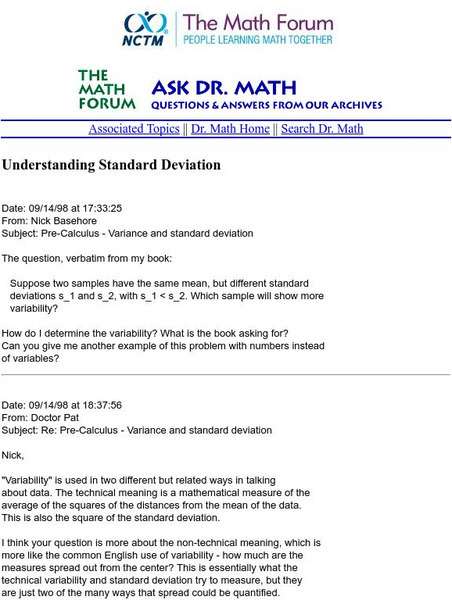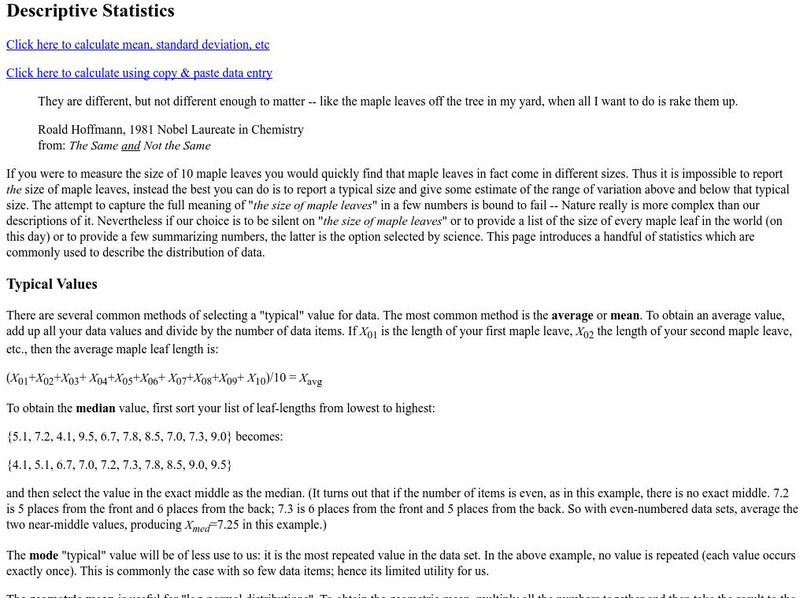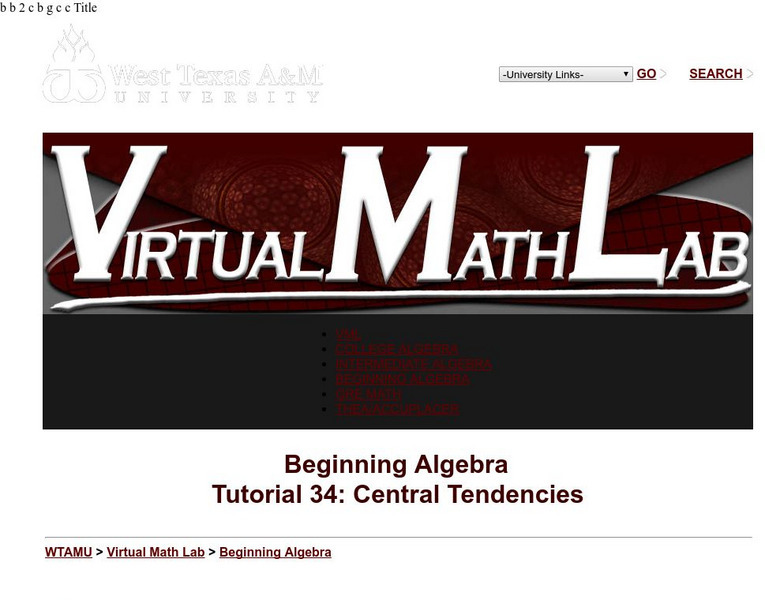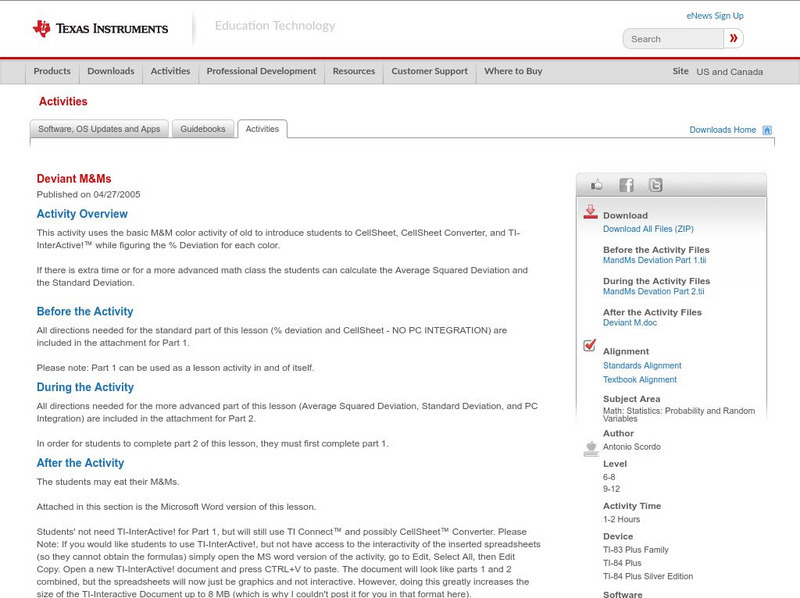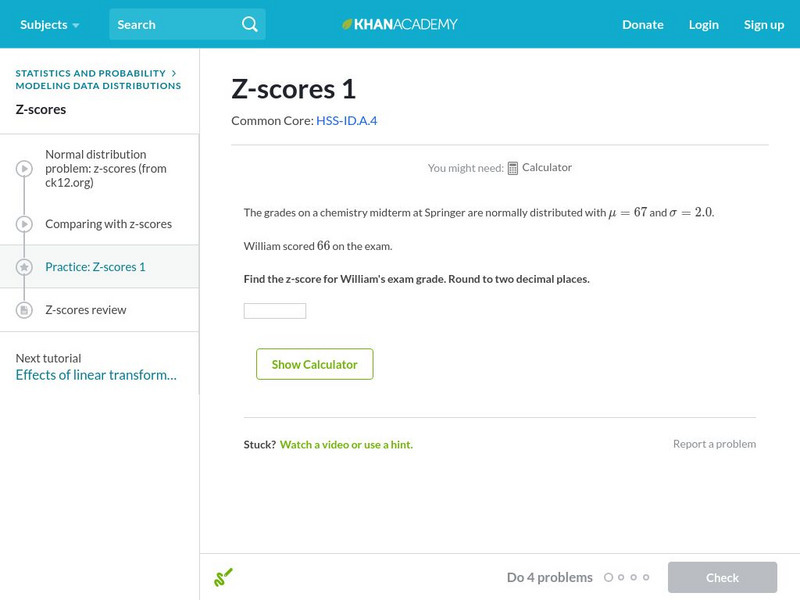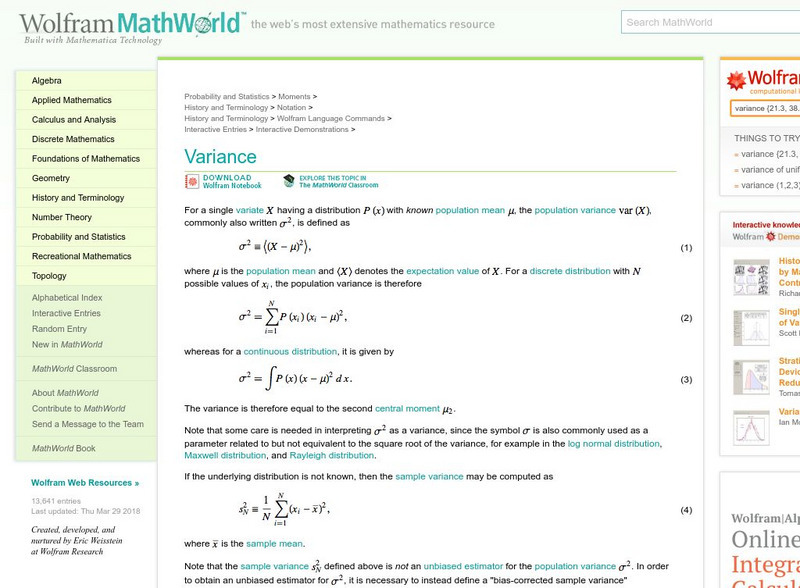National Council of Teachers of Mathematics
The Math Forum: Understanding Standard Deviation
MathForum answers a question on variance and standard deviation.
Other
Descriptive Statistics
Very complete explanation of mean, standard deviation, etc. including an online calcluator for these statistics.
Texas A&M University
Wtamu Virtual Math Lab: Beginning Agebra: Central Tendencies
A tutorial to understand the three central tendencies and how to find them, as well as the standard deviation of values. Offers a discussion and practice problems.
Texas Instruments
Texas Instruments: Deviant M&ms
This activity uses the basic M&M color activity of old to introduce students to CellSheet, CellSheet Converter, and TI-InterActive! while figuring the % Deviation for each color. If there is extra time or for a more advanced math...
Texas Instruments
Texas Instruments: Statistics for Math B
Students will determine the mean, median, mode and standard deviation of collected data. They will make a frequency histogram of the grouped data, both on graph paper, and on the TI 83+.
Khan Academy
Khan Academy: Mean Absolute Deviation (Mad)
Practice calculating the mean absolute deviation.
McGraw Hill
Glencoe: Online Study Tool: Quiz on Measures of Variability
Students demonstrate advanced mathematics skills with this online quiz. The questions check understanding on measures of variability. Topics include variance, standard deviation, and frequency tables.
Khan Academy
Khan Academy: Z Scores 1
Find the z-score of a particular measurement given the mean and standard deviation. Students receive immediate feedback and have the opportunity to try questions repeatedly, watch a video or receive hints.
CK-12 Foundation
Ck 12: Using Probability to Make Decisions
Use this Common Core Math Standards Browser to search specific math concepts and their corresponding standards. This page focuses on Using Probability to Make Decisions. Click on the links to find lessons, activities, videos, and study...
Math Is Fun
Math Is Fun: Showing the Results of a Survey
A variety of ways to display the results of a survey are listed, including tables, statistics and different types of graphs.
Other
Web Quest: Take Me Out to the Ball Game
This is a WebQuest written by Susie Hallar of the Warrensburg Schools in Warrensburg, Missouri. Students research 10 famous baseball players, then use the information they find to compute averages, standard deviations, central...
Wolfram Research
Wolfram Math World: Variance
MathWorld offers a plethora of information on variance. Student should have some statistic knowledge to use this site. This site contains links to related topics.
Khan Academy
Khan Academy: Normal Distributions Review
Normal distributions come up time and time again in statistics. A normal distribution has some interesting properties: it has a bell shape, the mean and median are equal, and 68% of the data falls within 1 standard deviation.
Khan Academy
Khan Academy: Sampling Distribution of a Sample Proportion Example
Presents a problem that is similar to what might be on an AP Statistics exam. Walks students through each step for solving it and students input answers to questions along the way.
Khan Academy
Khan Academy: Expected Value With Calculated Probabilities
Find expected value based on calculated probabilities. Students receive immediate feedback and have the opportunity to try questions repeatedly, watch a video or receive hints.
Khan Academy
Khan Academy: Discrete Random Variables: Expected Value
Compute the expected value given a set of outcomes, probabilities, and payoffs. Students receive immediate feedback and have the opportunity to try questions repeatedly or receive hints.
Oswego City School District
Regents Exam Prep Center: Statistical Studies, Central Tendency, and Dispersion
The mathematics tutorial investigates statistical studies, central tendency, and dispersion. The lesson consists of class notes, calculator tips, examples, and practice problems with solutions. The teacher resource includes an activity...
Khan Academy
Khan Academy: Empirical Rule
Practice applying the 68-95-99.7 empirical rule. Students receive immediate feedback and have the opportunity to try questions repeatedly, watch a video or receive hints.


